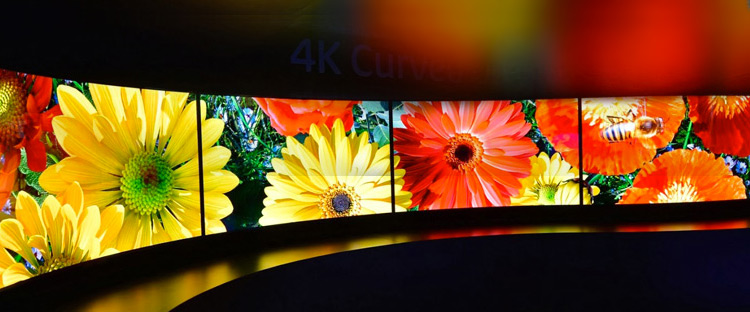The TV of the future: curved screens, OLED, holography

At the CES 2014 in Las Vegas, one of the largest consumer electronics trade shows, a strong trend emerged for the next generation of TVs: the curved screen. This shape offers a wider field of view than a flat screen with its panoramic effect making the images bigger, more vivid, more realistic. The screens showcased at the US trade show were obviously very large screens (over 70 inches) with 4K definition, high-end, but it is reasonable to believe that the curved screen will be one of the upcoming trends for TV set manufacturers.
Another future frontier which is of great interest to the majority of consumers is OLED TV. OLED is the acronym for Organic Light Emitting Diode. A screen made with this technology, unlike a liquid crystal screen, emits its own light. OLED screens are thinner, possibly even folding (just another of the wonders that the future holds for us), and they are eco-friendly, that is, they consume less energy. From the point of view of image quality, suffice it to say that OLED TV offers what is currently the closest thing there is to a cinematographic image.
The future has even more sophisticated and incredible surprises in store for us. Like 8K, the standard that quadruples the performance of Full HD with a resolution of 7680×4320 pixels. The Japanese state-run broadcaster NHK has recently announced its intent to broadcast the 2020 Tokyo Olympics to the world in 8K. In order to achieve this objective, NHK plans to perfect its experimentation by starting a single test channel in 8K format for the Rio de Janeiro Olympics in 2016.
Traditionally major sporting events are the preferred vehicle for the introduction of technological innovations. By 2022, when the football World Cup will be held in Qatar, it is already expected that, once again thanks to NHK, we will have holographic TVs, that is the integral 3D effect: a 3 dimensional image projected into space immediately in front of the viewer. Today it sounds like science fiction, but it could be that in 2022 we will go to an Italian football stadium to watch a game that is being played at that very moment thousands of kilometres away in Qatar and transmitted onto the field right in front of us.

